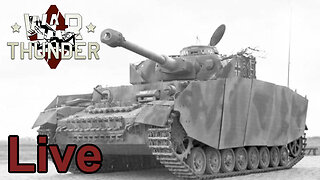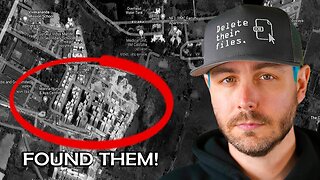Premium Only Content

Field of Glory II: Medieval - Reconquista 01
Episode 01
Field of Glory II: Medieval - Reconquista is a turn-based tactical game set in the High Middle Ages and it's the first DLC for Field of Glory II: Medieval. Developed by the legendary Richard Bodley Scott it brings the best from the tabletop world into the best digital framework.
Feudalism did not have such a dominant impact in Spain and Italy as it had in North West Europe. Both these lands had unique factors which affected the conduct of warfare.
In 1050, more than half of the Iberian peninsula was under the rule of Islamic states, an area known as Andalusia. After the demise of the Umayyad Caliphate in 1031, Andalusia was divided into several small Muslim states, known as the Taifa emirates. The Taifas often fought amongst themselves, leaving them unable to match the larger Christian Kingdom of Castile that was created in 1037 with the absorption of the Kingdom of Leon.
This was the true start of the Christian Reconquista that would not be completed until 1492. To help stem the Christian onslaught, in 1086 the Taifa Emir of Seville invited the Murabit Berbers of North Africa to enter Spain. This did not work as planned for the Taifas, for after defeating the Castilians at the Battle of Sagrajas, the Murabits quickly incorporated most of the Taifa emirates into their empire.
The Murabit empire was taken over in 1147 by a rival Berber sect, the Almohads. These events were a severe setback for the Spanish Christian kingdoms, but they recovered to win a great victory over the Almohads at Las Navas De Tolosa in 1212, which broke the power of the Muslims in Spain forever. Soon only the emirate of Granada was left, but as a vassal of Castile. Throughout the period there was also frequent fighting between states of the same religion, and Muslim and Christian warriors often had few qualms about serving princes of a different religion.
In Northern Italy the big cities had always tried to maintain a degree of independence, and often fought vigorously against the attempts of the Holy Roman Emperor to enforce his authority over them. They grew increasingly wealthy on trade, and by the end of the 11th century their city militias had become the mainstay of Italian armies, eclipsing the role of the feudal knights. In 1176 the northern Italian cities formed the Lombard League, and won a great victory over Emperor Frederick I Barbarossa at the Battle of Legnano.
This was a part of the Wars of the Guelfs and Ghibellines. The Papacy and the Empire had initially quarrelled over who had the right to appoint church officials, this was known as the “Investiture Controversy”. The Ghibellines were those who supported the Holy Roman Emperor, while the Guelfs were the party supporting the Pope. Even though the Investiture Controversy was resolved in 1122, the conflict between the Papacy and the Empire, and the Guelfs and Ghibellines, carried on for hundreds of years.
-
 3:13:18
3:13:18
Gamer_1745
7 days agoWar Thunder - Live- Team G - WW II Tanks - Squad Play - Join Us
48 -
 LIVE
LIVE
SNEAKO
4 hours agoCheesur edate, Jake Shields on election
5,216 watching -
 39:34
39:34
Nerdrotic
6 hours ago $1.04 earnedAirbursts with Dr Malcolm LeCompte & Giants and Ancient Civilizations with Hugh Newman
58.6K5 -
 1:03:38
1:03:38
vivafrei
12 hours agoElection RECAP! Long-Count Chicanery! FULL Jan. 6 Pardons! Let's Mock Lichtman & MORE! Viva Frei
130K139 -
 LIVE
LIVE
Vigilant News Network
7 hours agoDoctors Drop Post-Election COVID Bombshell | Media Blackout
4,647 watching -
 14:13
14:13
Scammer Payback
12 days agoTelling Scammers Their Address
122K82 -
 5:43:21
5:43:21
Barstool Gambling
11 hours agoBig Cat and Co Sweat Out the Week 10 Sunday Slate | Barstool Gambling Cave
90.1K3 -
 2:49:36
2:49:36
The Jimmy Dore Show
2 days agoRumble Time Live w/ Jimmy Dore & Special Guests Roseanne Barr, Dr. Drew, Drea de Matteo & More!
556K661 -
 17:17
17:17
DeVory Darkins
23 hours agoKamala Post-Election BOMBSHELL Exposes $1 BILLION Campaign DISASTER
84.1K173 -
 19:52
19:52
Stephen Gardner
1 day ago🔥HOLY CRAP! Trump just did the UNTHINKABLE!!
87.4K569